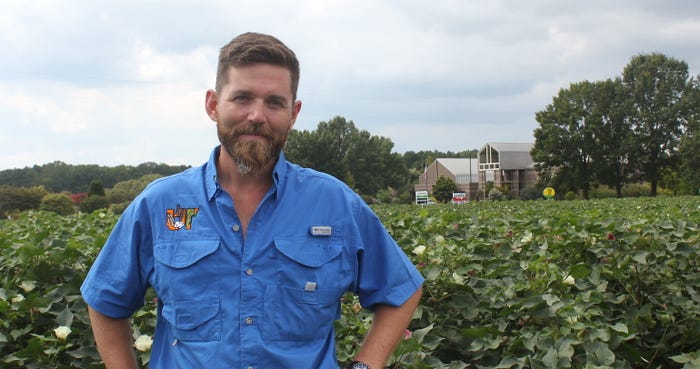
Cotton farmers in the Midsouth like to say they don’t plant in June, but they will plant until May 35th. For many, the boundaries of calendar plausibility were stretched once again this season.
While overall cotton planting was business as usual across the region, there were geographic pockets where environmental conditions delayed planting or created replant situations. From the Missouri Bootheel to counties deep in the Mississippi Delta, there were reports of sandblasting, hail damage, packing rains, and excessively wet and cool days that, according to experts, made fields ripe for disease or pest damage.
And when the calendar turned to June (or the fifth week of May if you prefer) there was still cotton going in the ground.
“June-planted cotton is risky, but can still be profitable, particularly if we have a long fall” said Tyson Raper, Extension cotton specialist with the University of Tennessee.
“Unfortunately, I’ve never had much luck controlling the weather, but there are management strategies growers can use to emphasize earliness in later-planted cotton.”

Raper outlined three action steps growers can take to offset the late start to cotton.
Less nitrogen
With cotton planted past the prime window, managing for earliness is the name of the game. Raper said that begins with lowering nitrogen rates.
“When we overshoot nitrogen, we delay maturity, and in a late year the effects will be magnified. An aggressive nitrogen application (100-120lb N/ac) will spur more vegetative growth and push first fruiting node up the plant. At this point, we cannot afford to sacrifice any fruiting positions low on the plant.”
“Growers whose cotton was planted past the optimal planting date should consider reducing nitrogen rates. Under normal conditions we typically recommend applying nitrogen at 80 to 90 lbs/ac. With a shorter growing season, sliding nitrogen down to around the 60lb/ac mark will help to avoid excess vegetation on the cotton plant and reduce the potential for disease issues and delays in maturity,” he said.
More aggressive with PGRs
Raper said low-rate plant growth regulator applications are another way to promote earliness.
“Growers looking at a shorter season must be more aggressive with plant growth management strategy. I recommend introducing PGR applications pre-bloom while monitoring internode length between the fourth and fifth nodes,” he said. “This will slow down excessive vegetative growth and help the plant transition to reproductive mode.”
“We want to keep our fruiting bodies low on later-planted cotton. Rank cotton usually sets fruit higher on the plant. If your cotton had a late start, the fruit high on the plant may not reach maturity in time,” he added.
Meticulous scouting
A shorter growing season only magnifies losses from insects and weeds. Raper encourages producers facing a shortened growing season to be meticulous with scouting and quick to address pest issues.
“Our top priority is protecting low bolls. That starts with vigilant scouting and timely pesticide applications. Once a threshold is reached, address it immediately. Delaying applications several days after a threshold is reached will hurt more in a shortened growing season,” he said.
“A question I have received a lot this year is ‘should established pest thresholds be reduced in a late crop?’ Entomologists will say no. Reducing thresholds will create other problems, such as flaring additional pests, and it may end up costing more in the long run.��”
“When you’re looking at a shorter growing season inputs should be optimized instead of maximized. In other words, be as efficient as possible. Act quickly when thresholds are reached and use the correct products and rates,” he said.
About the Author(s)
You May Also Like






